Movie Review – Matrix, The
Mind bending, game-changing science fiction film that revolutionized cinema forever, it’s hard to completely fathom just how this dense, intellectually action-packed movie managed to become one of the most iconic of all time and yet, at its heart, still be as fresh and original now as it was upon release. Staggering action sequences, as well as layer after layer of mythology and iconography, ensure The Matrix remains a genuine classic of the medium.
Principal Cast : Keanu Reeves, Carrie-Anne Moss, Laurence Fishburne, Hugo Weaving, Joe Pantoliano, Julian Arahanga, Matt Doran, Gloria Foster, Paul Goddard, Robert Taylor, Anthony Ray Parker, Marcus Chong.
Synopsis: A young computer hacker is led into a bizarre world where machines and humans are at war, fought almost entirely in the subconscious world of the Matrix.
********
A hundred years from now, when historians look back at the early part of the 21st Century, in particular cultural and popular shifts in social understanding across what was once the Western Hemisphere, no doubt mention will be made of a film about a man who became the messiah, fought an evil devil and thwarted the oncoming apocalypse. No, I’m not taking about The Passion of The Christ, I’m referring to The Matrix, a sci-fi film which came from nowhere in 1999 and changed the face of cinema forever. Make no mistake, the phrase “changed the face of ______ forever” is perhaps one of the most overused cliches ever devised by the English language, but in this instance, it’s the most accurate description. Extraordinary special effects, invented just for the film, astonishing action sequences, and some of the most head-spinning storytelling in a decade made The Matrix a box-office phenomenon, causing a cultural shift in entertainment possibilities. Much like Terminator 2 and Jurassic Park, which gave us the first fully-realised digital effects, The Matrix introduced a new level of effects and set the bar so high it wouldn’t be toppled until its own sequel a few years later.
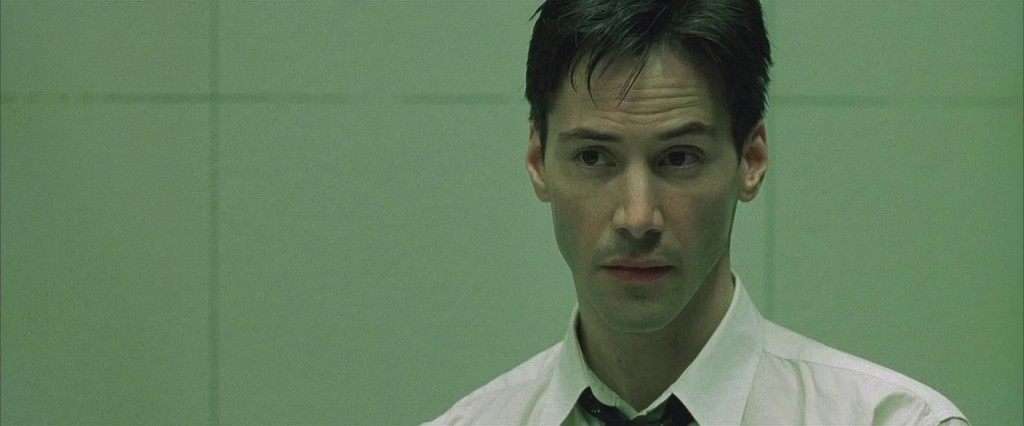
Set ostensibly in the present day, Thomas Anderson (Keanu Reeves) is a cube worker, programming computers at a major software company. By night, however, he is Neo, a computer hacker searching for the answer to the question “What is the Matrix?”. One night, he’s met by the mysterious Trinity (Carrie-Anne Moss), who introduces him to Morpheus (Laurence Fishburne), the leader of an underground resistance movement against men known as Agents, led by Smith (Hugo Weaving). Morpheus offers to show Neo the truth about the Matrix, revealing that the world Neo’s been living in all his life is actually a machine-induced hallucination, a comatose existence inside a small incubator from which his life energy is drawn by sentient machines who’ve taken over the planet. Morpheus believes that Neo is The One, the prophesied savior of humanity who will bring about the end of the Machine’s rule over Earth, and restore humanity to its rightful place above ground. Humans now live deep beneath the Earth’s surface, in the last city, Zion, where the Machines cannot find them. Morpheus begins to train Neo to fight the Machines within the Matrix, which functions much like a computer game, with rules and boundaries to govern its behavior – it is, after all, a machine-built world inside the Matrix. As the awful truth dawns on Neo, and self doubt continues to linger over his powers and abilities inside the Matrix, Agent Smith is slowly, inexorably, tracking him down to kill him.
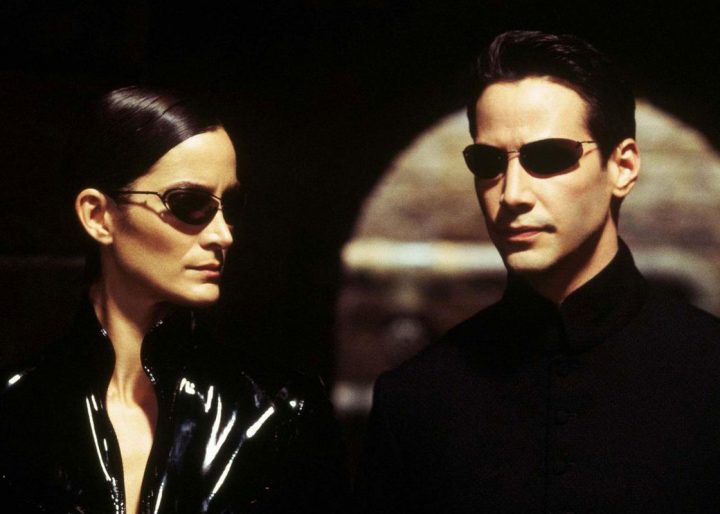
To say The Matrix is a densely iconic film is to say the murals of the Sistine Chapel were the result of a scribbling child. A massive understatement. Larry and Andy Wachowski poured so much of their influences into their script that it’s a virtual tour through every cyberpunk, underground, alternative religion and counterculture movement since the dawn of time, as well as being a fantastic action film to boot. Philosophers and theologians, scholars and geeks the world over, have all looked at The Matrix and tried to understand its many varied subtexts, from it’s Jesus-like central messiah figure in Neo, to the prophet Morpheus (akin to Jesus’ disciple Paul) and Trinity (because you have to have three to represent the Father, Son and Holy Ghost, right?). I know it’s beyond my grasp of intellectual thinking-persons highbrow philosophy to fully explain the influences and themes within The Matrix, so I won’t try – I don’t want to appear dumber than I am! Suffice to say, the story the Wachowski Brothers weaved into a science fiction film is one of the most insanely cliched, yet altogether fully developed, versions of its kind ever put on screen. The story is pretty clear: a man must rise above his own self doubt, in a world he doesn’t fully understand, to take responsibility for those weaker and less fortunate than he; and in doing so, vanquish a Great Evil for Humanity to survive. I think they stole the same plot for The Rugrats Movie, didn’t they? Anyway, The Matrix allows for everyone, whether religious, agnostic or aetheist, intelligent or stupid, to take something away with them each time they watch it. The film has so many layers of concepts that you can watch it multiple times and still find new ideas, new ways of thinking, new moments of discovery, that you didn’t notice before. Not many films can offer that.
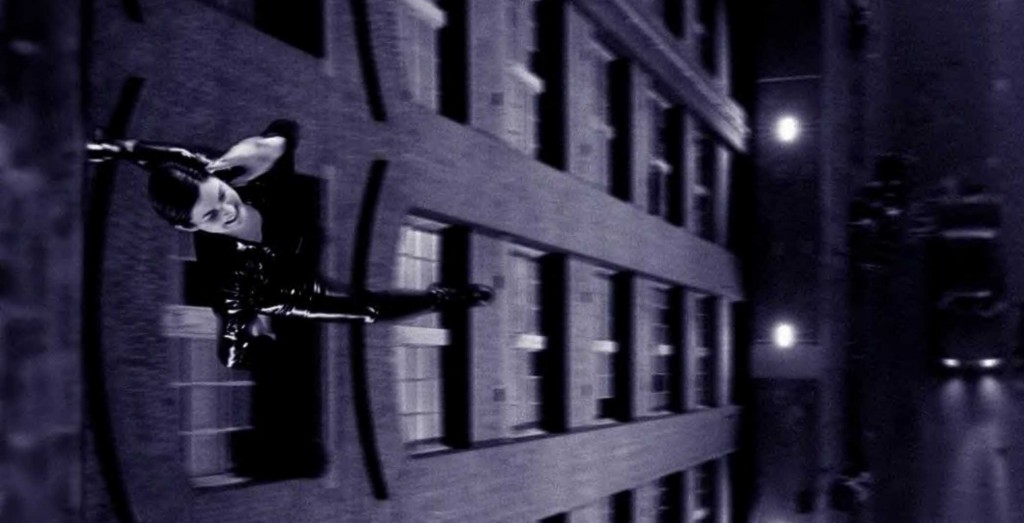
The Wachowski’s pitch to Warners of their idea for The Matrix must have sounded astonishing – with its references to Biblical, Buddhist and intellectual themes of self and humanism, not to mention its complicated plot involving a world-within-a-world (always a tricky thing), it’s little wonder a load of studios passed on the Wachowski’s bold vision. It wasn’t until producer Joel Silver and Warner Bros decided to take a chance on the sophomore directors (the Wachowskis had to direct low-budget thriller Bound first, in order to prove to the studio that they could, in in fact, direct), and so thankfully for us, The Matrix was given a green light. The rest (damn, another overused cliche) is history.
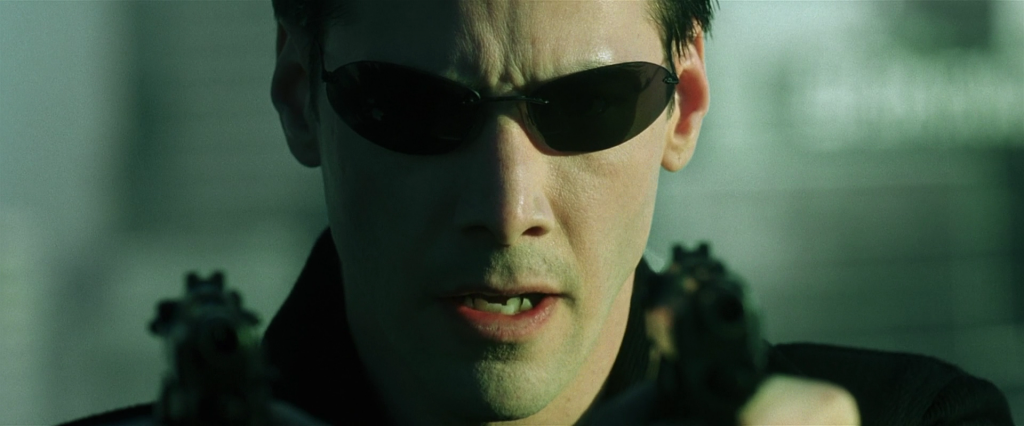
The Wachowski’s love of comic books shows through in every frame of this film. Having written a few titles for Marvel prior to entering the film industry, their eye for detail and use of framing to convey emotion and action translated well onto the big screen. The Matrix’s cyberpunk tone, its stylised action sequences and the use of groundbreaking visual effects were all borne of the comic book medium itself: the cyberpunk movement began to manifest during the 80’s, and became stylish after Ridley Scott used its influence for Blade Runner – and it was used to great effect in a number of comic book titles including Akira and Warren Ellis’s Transmetropolitan, among others. The electric, mechanised worlds of a dystopian “near future” portrayed in comics, films and books influenced the Wachowki’s intent to show an apocalyptic, semi-destroyed Earth, as well as the dregs of a rebellious humanity, fighting the industrialised might of an intelligent, sentient machine race.
The influence of the hyper-real style of Manga and Anime, where laws of physics seem to be defied on a daily basis, also served to influence some of the more amazing action sequences, with people flying, leaping and contorting into a variety of positions with the strength of a hundred men and the dexterity of a politician in a sex scandal. The opening sequence, with the smartly attired Trinity trying to escape the clutches of the pursuing Agents, is quite possibly one of the most brilliantly conceived opening salvos for a film ever shot – the film unravels slowly and with purpose, never giving away anything until it’s absolutely necessary – at this stage, we don’t know who Trinity is, or who the Agents are, and exactly who we should be barracking for, but the possibilities are open ended. Bullet Time makes its debut in this sequence, the revolutionary slo-motion camera move around a subject in motion made jaws drop to the floor around the world when that first reel unspooled in cinemas.A combination of technology, style and film-making smarts, Bullet Time became one of the most parodied Matrix elements on a burgeoning YouTube back in the day, and even snuck into parody films as well, just for laughs.
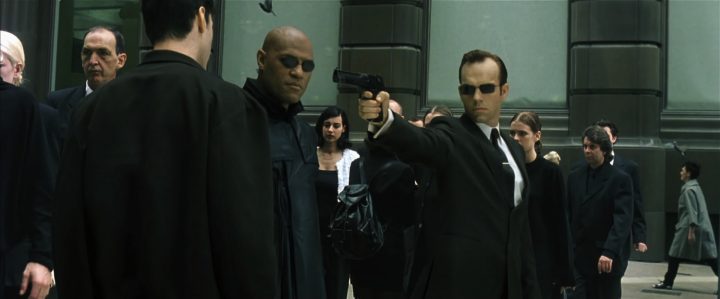
But a film is nothing if the casting, and the acting, aren’t up to snuff. Keanu Reeves, perhaps best known at that point for his emotion-free roles in projects like Point Break, Bram Stokers Dracula, Chain Reaction and Speed, donned the black trenchcoat for cool and suited up with cool for the role of Neo – and spent most of the film looking like he had a surprising bout of constipation. His iconic “whoa” as he watched Morpheus leap between two high-rise buildings personified the character perfectly – as well as harkening back somewhat to his Bill and Ted days – Neo is a character in flux: he’s not sure of himself in his “real” world, he’s even worse of in the actual real world, and he struggles with personal fear as he starts his training within the Matrix. His counterpoint is Trinity, played with icy coolness by super-fox Carrie-Anne Moss. Moss, whose main claim to fame until that point had been low key roles in various television series in and around Hollywood, gave us the film’s romantic sexual element: somebody who could be ruthless and human in equal measure, somebody who’d been battered and bruised in her life, and who wouldn’t be anything less than Neo’s equal. Moss and Reeves had a chemistry which was palpable on-screen – they burned the eyeballs with their sweaty, love-me glowering at each other.
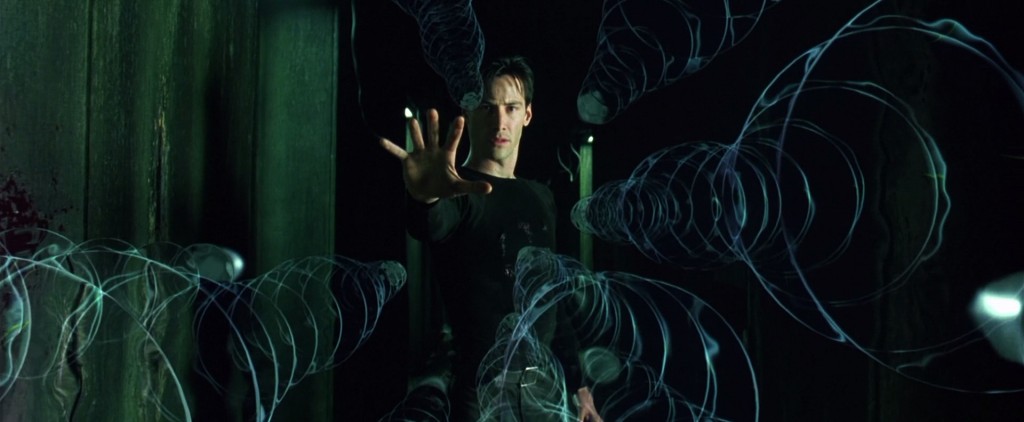
Perhaps even moreso than Neo, Morpheus remains one of The Matrix’s most iconic characters – he’s a mix of Obi Wan Kenobi, Yoda, your Grandfather and a bitchin’ gun-totin’ gangasta, in the persona of Mr Awesomesauce himself, Laurence Fishburne. Fishburne doesn’t so much inhabit the role of Morpheus as he lives it: Morpheus is one self-assured dude, even though in the real world of the film he’s seen as something of a whacko (an element made more clear in the sequels). His armless glasses, a style hit that made everybody want a pair just like it, coupled with that magnificent flowing trenchcoat (perhaps a nod to Alec Guinness’s robes in Star Wars?) and a hard-ass attitude to match, make Morpheus a coiled viper of a character. He’s smooth, in control, and knows his shit. Fishburne took this role and made it his own.
Morpheus’s ship, the Nebuchadnezzar, contains a crew of mixed origin and ethnicity – Cypher (Joe Pantoliano) is the resident snark and busted cog of the crew, and his role towards the end of the film catalyses the final battle between Neo and Agent Smith. Mouse, the young programmer who builds the training simulations Neo and Morpheus practice in when inside the Matrix, is played with stammering persuasiveness by Aussie boy Matt Doran, while ships “operator” Tank, is portrayed by a cool Marcus Chong. Gloria Foster’s iconic performance as The Oracle, the Matrix’s resident seer, remains perhaps her most popular appearance, which is a great one to go out on as she passed away midway through production of Reloaded and Revolutions. Her conversation with Neo, inside a kitchen where she’s baking cookies, remains one of the films most discussed scenes – at least subtextually. The chief villain, Agent Smith, is given over to the dulcet tones of Aussie actor Hugo Weaving, known for his roles in Aussie far such as Priscilla Queen of The Desert and Bangkok Hilton. Here, his unique vocal stylings gave Smith one hell of a creepy vibe – he sounds like a sexual predator and dresses like a federal agent, and has the same kind of powers as Morpheus and Trinity within the Matrix. Weaving is more than a match performance wise for his fellow cast members, and gives Keanu an acting lesson all over the place. Reeves isn’t the most emotional persona on-screen, and while this time out it serves the purpose of the film, he’s outclassed by the key villain of the piece.
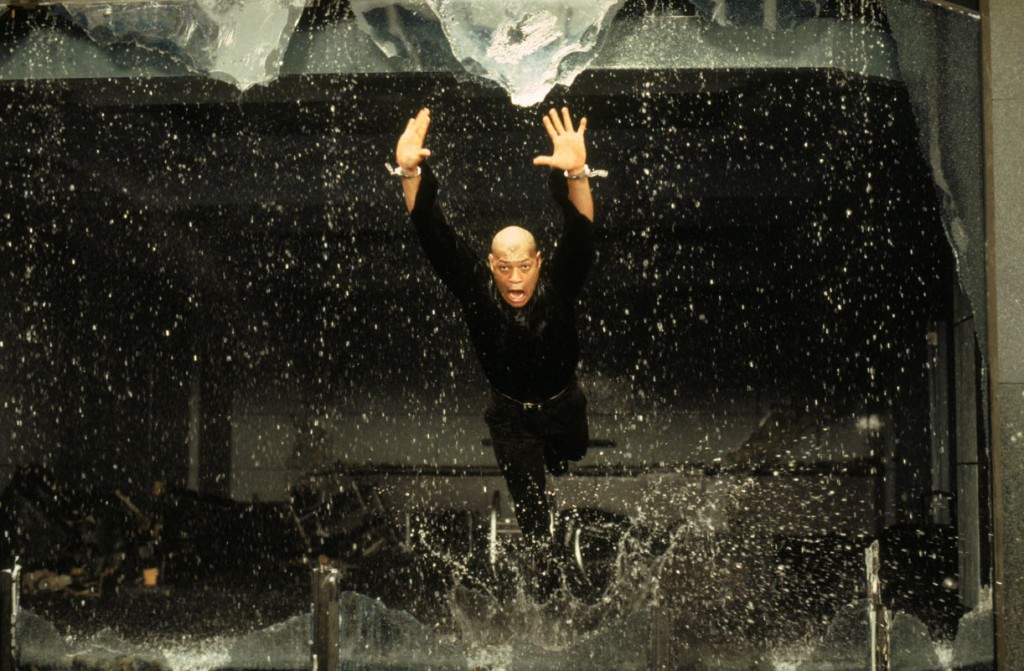
The visual effects, of which there are many, were astounding for their time, and remain so even today – even if it’s dated just a little. Advances in computer technology will always make older CGI look… well, older, but The Matrix is a film which has aged well, rather than poorly. The Bullet Time effect notwithstanding, the use of practical effects mixed with CGI stuff and the stunt-work in The Matrix hold up even now as exceptionally well done. The production design is superb, with amazing levels of detail in every aspect of the films “real world” setting – the set of the Neb, for example, is filled with tubing, wiring and other paraphernalia it makes your eyes water with the detail. The film’s most iconic action sequence is undoubtedly the lobby shootout towards the end of the movie, where Neo and Trinity break into an Agent stronghold to rescue a hostage Morpheus. Plentiful slow motion, amazing camerawork and some really cool editing, make this sequence a visual (and aural) delight, and hammers home the fact that even in the midst of a massive shoot-out, the Wachowski’s were still moving the film forward. One of the major complaints about action films is that the action sequences often push the story aside in favour of gratuitous stunts and explosions, and yet, here was a big budget film with plenty of action that still managed to drive its narrative forward while delivering massive stunts and explosions. The very idea that this was possible, as a side-effect, raised future audience expectations of other filmmakers, something we’re still waiting to experience again to this day.
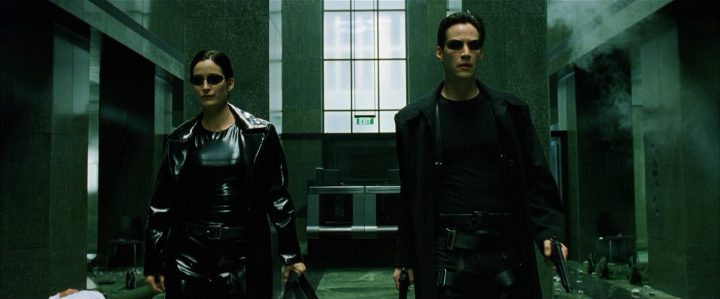
It’s my opinion that the key to The Matrix’s success was less about the jaw-dropping visuals or mind-bending concepts, but the fact that this film has no fat on it whatsoever. This is a lean, mean, action machine of a film – every line of dialogue, every frame of vision, every scene and edit serves the story first, looks cool second. Remove any part of those features, remove a line of dialogue, a glance or edit at all, and you lessen the film. This is a rare occasion in a film: most films come with a few scenes which could, in all honesty, be removed and nobody would know they were missing anything, but The Matrix wouldn’t allow it. The Wachowski’s obviously honed their script and story to the perfect dilution of their ideas, and gave us a film that is a pure, streamlined story with no flab at all. As each new revelation in the story unfolds, as we learn about the Matrix in the same way Neo does, the audience is never simply given the story on a platter – we must use our brains to watch this film, and some people can’t handle it. The fore-brain-challenged mob, the kind of people who laugh at those insipid fat-suit comedies starring Martin Lawrence (go on, argue against me, I dare you!), will say they didn’t get The Matrix and found it confusing and hard to understand. Fine with me – they’re the people you want working at McDonalds and stuffing feathers into pillows. People who find a deeper meaning in The Matrix than just flying men and crunching fight sequences will appreciate the level of respect the Wachowski’s show to their audience.
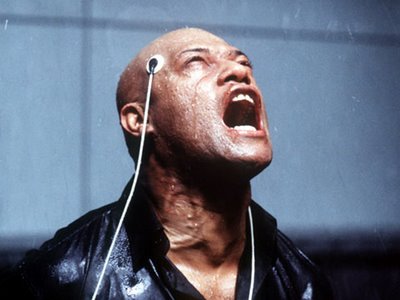
By rights, films like The Matrix shouldn’t be made by Hollywood. The detail, the epic story and the vast canvas on which the Wachowski Brothers painted their story of human redemption, would normally pass through various committees before filming to figure out how to put it on a lunchbox or a fast-food container. Hollywood’s business model considers its audience to be generic, stunted plebs with limited understanding of the human condition, although with The Matrix they began to see that good quality stories and risky, stylish filmmakers can deliver the big bucks too. After all, films are a business, and nobody’s there to lose money. So for Warners to allow The Matrix to be made, took a leap of faith unseen in Tinseltown since they cast Liz Taylor as Cleopatra. The result, though, was there for all to see. The Matrix remains an icon of cinema, a pop-culture touchstone for a generation and one of the most genre-smashing films to ever come from a major studio. Revelatory, revolutionary, and by far one of the most influential films of the last decade, The Matrix deservedly slots easily into that oft-touted cliche of “a classic”.

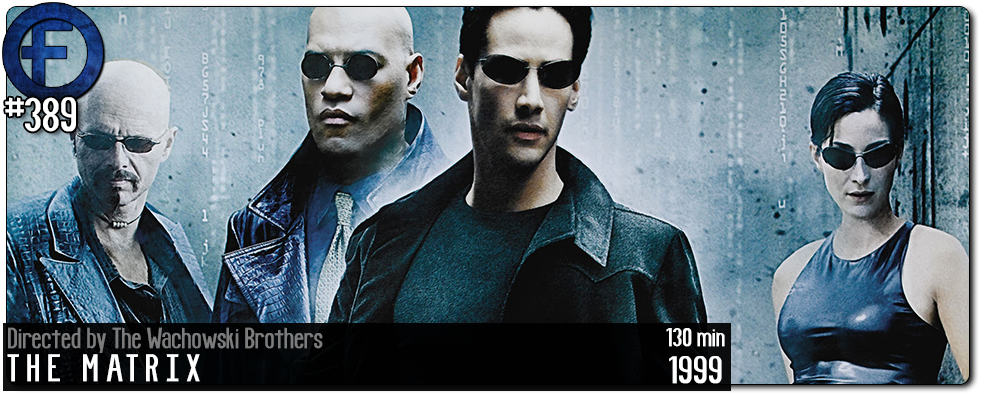
A film that proves that if you have an original story, awesome action sequences, and stunning visuals, you really can make one of the best blockbusters of all-time. Good Review!
Thanks Dan – The Matrix would surely have to rank as one of the best films of the last 20 years.
Considering I felt I lacked the vocabulary to adequately praise this film enough, your praise is most welcome, Al. Thanks for playing!
Definitely one of the few 5 out of 5 shot movies to come along in this lifetime, and topped only by your mad reviewing skillz.